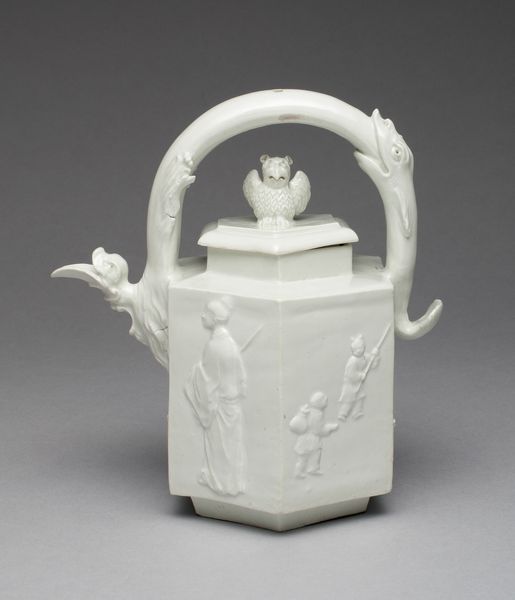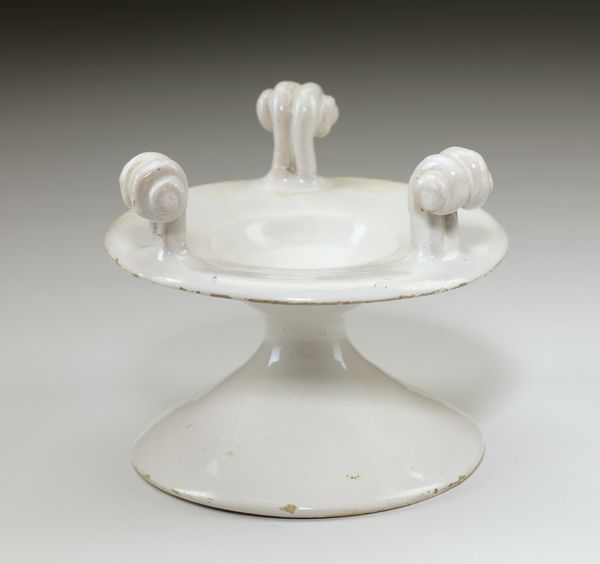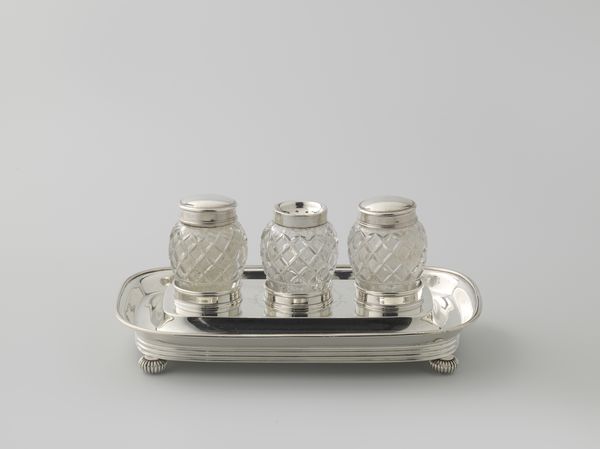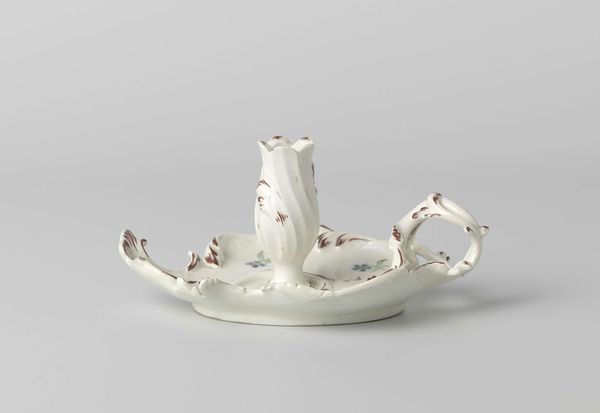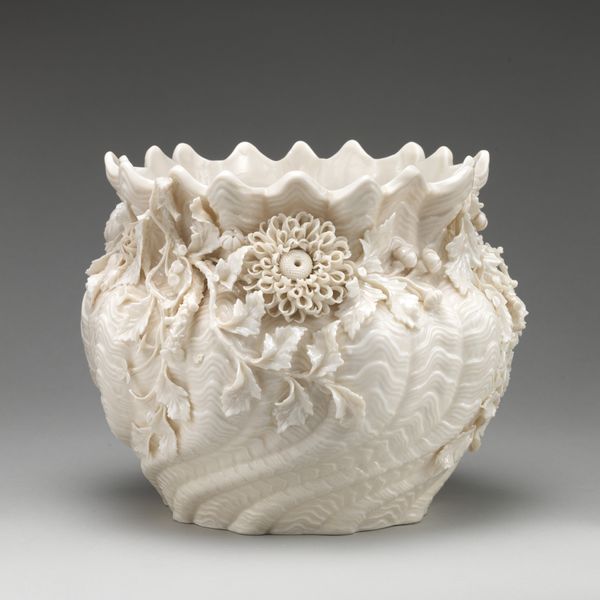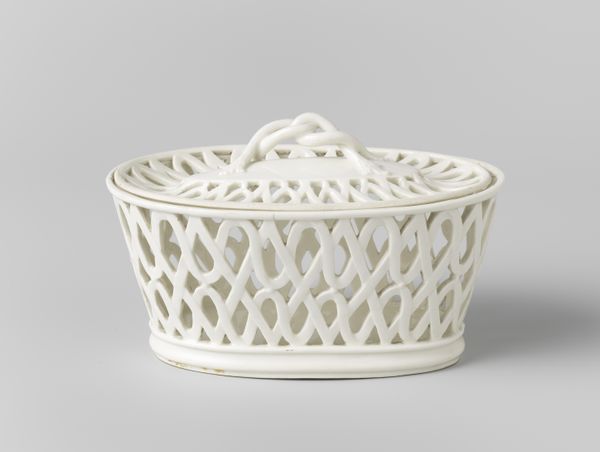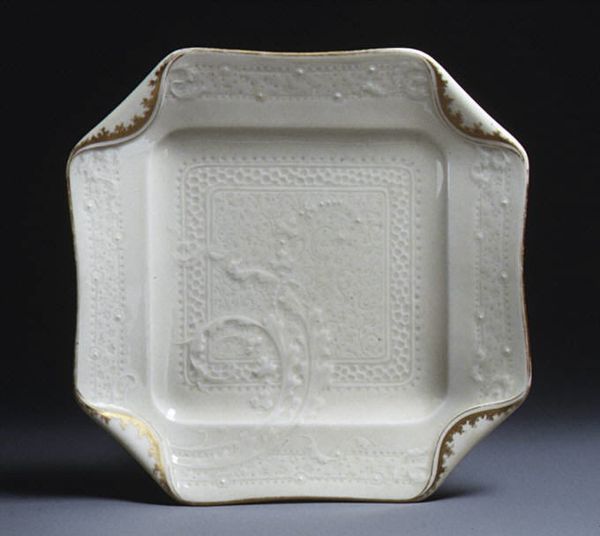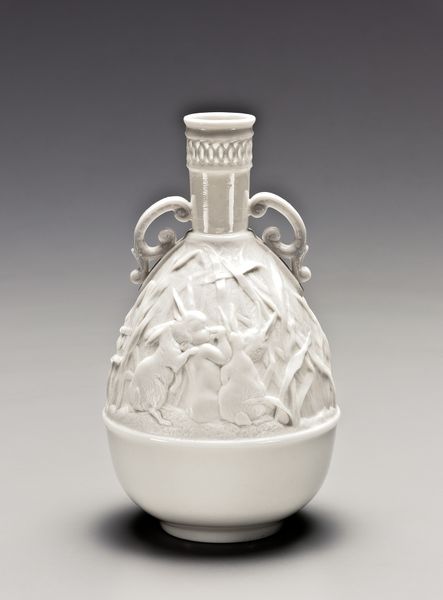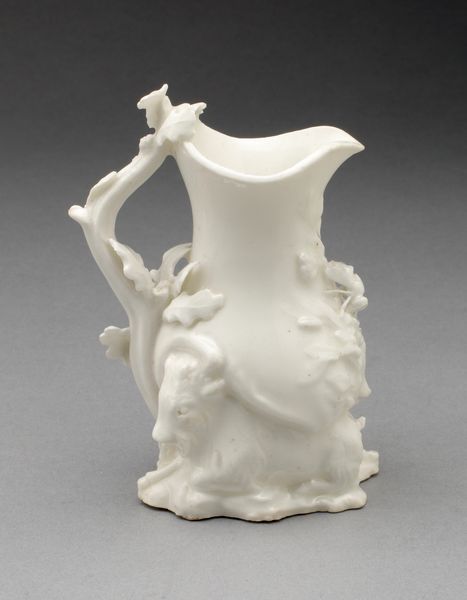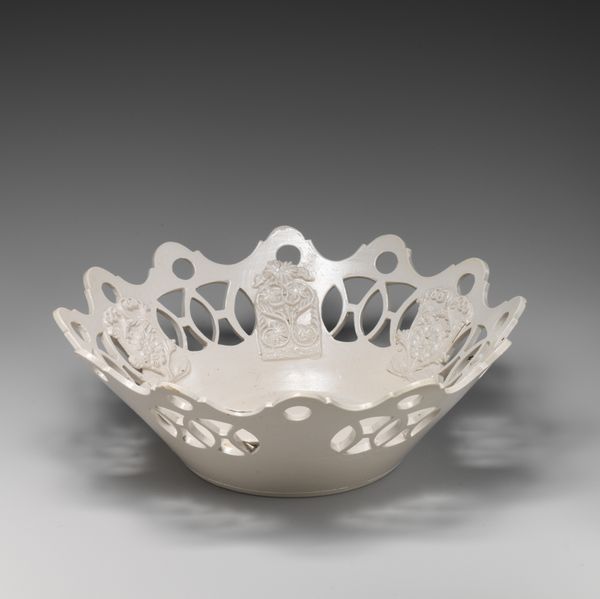
Dimensions: 18.4 × 17.5 × 17.5 cm (7 1/4 × 6 7/8 × 6 7/8 in.)
Copyright: Public Domain
Editor: This ceramic Cruet set, dating from around 1785, was produced by the Wedgwood Manufactory. Its stark whiteness and delicate forms give it an almost ghostly presence. What cultural echoes do you hear when you look at it? Curator: The whiteness itself speaks volumes. Think of the 18th century's obsession with Neoclassicism, a style explicitly referencing the purity of ancient Greece and Rome. White was not just a color; it represented virtue, reason, and enlightenment ideals. Notice also the intricate, almost lace-like pierced design on some of the vessels. This recalls a sense of luxury. Does that pattern remind you of something? Editor: It does – a kind of refined trellis work, like you might see in a very formal garden. Curator: Precisely! Rococo design often played with artifice and nature. These tiny perforations speak to control, cultivation, and the manipulation of nature so prized by the aristocracy. And notice how the set encourages specific condiments and sauces; it almost scripts the rituals of dining. Editor: It's fascinating to think about this cruet as an indicator of both wealth and societal norms. Like, it physically manifested good taste, in a way. Curator: Exactly. It is an index to the rise of the European bourgeoisie and a testament to the power of objects in shaping culture. The stark white almost becomes a sort of moral pronouncement! What do you take away from it? Editor: The visual culture around dining rituals has social implications – how a ceramic object speaks volumes about taste and moral values!
Comments
No comments
Be the first to comment and join the conversation on the ultimate creative platform.

